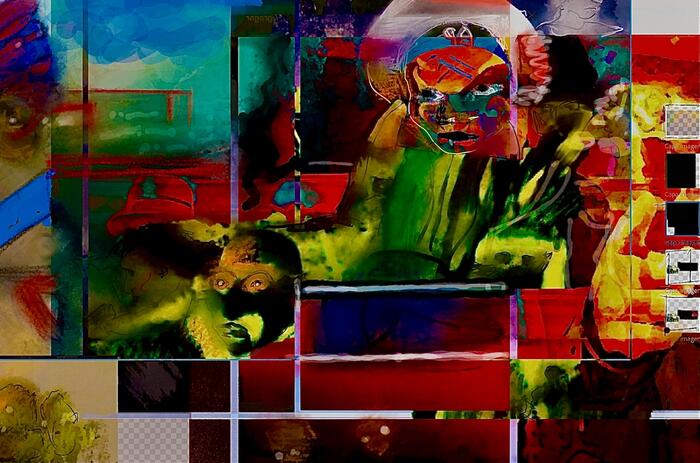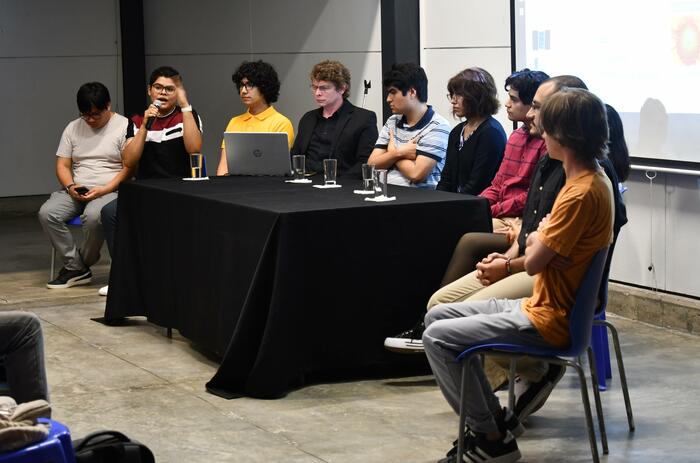Notes related to Digital Art

JULIO LE PARC LAUNCHES VIRTUAL MUSEUM: AN IMMERSIVE CONTEMPORARY ART EXPERIENCE
The Argentine artist has introduced the Julio Le Parc Virtual Labyrinthus Museum, an enveloping digital space that invites the public to explore more than 500 works, including previously unseen pieces created especially for this platform.

INDIO SOLARI PRESENTS BRUTTO AT THE MAR MUSEUM
The visual art exhibition brings together a selection of works created through digital media, exploring experiences, imaginary worlds, and the artist’s personal wanderings.

DIGITAL ART EXPANDS IN PERU
The Museum of Contemporary Art of Lima (MAC) is organizing New Horizons of Digital Art, aimed at young people and adults, as part of the public program of the exhibition Artware 9. Lima Digital Art Biennial.

OPEN CALL: THE ARTIST SERIES PERU BY AMERICAN EXPRESS
The Artist Series by American Express is an initiative that supports the development of local artists. Digital artists, illustrators and graphic designers from Peru, emerging or young career, are invited to participate. Deadline to apply: July 15, 2024.

HERRAMIENTAS: THE REVOLUTIONARY TRANSMEDIA GAMING PROTOTYPE BY ARTIST LEO CASTAÑEDA WITH OTRO INVENTARIO
Locust Projects presents Herramientas (Levels & Bosses), a transmedia gaming prototype by multimedia artist Leo Castañeda with Otro Inventario. The immersive installation invites visitors to play the videogame and enjoy the artist’s oil paintings, virtual reality experiences, sculptural gaming furniture, immersive video and more.

eDigital.ART IS THE NEW NFT INITIATIVE THAT CONNECTS COLLECTORS TO WORKS OF LEADING LATIN AMERICAN ARTISTS
A new NFT initiative connects artists represented by the renowned Ella Fontanals-Cisneros Collection with collectors. eDigital.ART launches an inaugural collection NFTarot with works from Glenda León and Gustavo Pérez Monzón.

NFTS AND METAVERSE: COLLECTORS OR INVESTORS? (PART II)
Although traditional art collecting includes an investment component and a business perspective, it still invokes a sort of romanticism aura that builds around an artist. A classic collector tends to follow an artist's trajectory, supporting his work. The new wave of NFT collectors stand out for not belonging to traditional art environments. Most of them are young aged and have never set foot in a museum or gallery, and therefore prioritize the finance aspect to NFT collecting to the emotional one. Generally, they are folks whose field of expertise is related to fin tech – they come from and drive the crypto world. And yes, they are mainly men.

NFTS AND METAVERSE: A CUBIST VIEW ON THE NEW DIGITAL ECOSYSTEM (PART 1)
As a conceptual artist working in the crossroads of art, science, and technology, with a corporate past and a social communications baseline, I am deeply interested in the new digital ecosystem raised by blockchain technology, NFTs and the Metaverse, from a perspective that addresses this realm as a sociological phenomenon, as a new business field, and as another one of the many mediums I utilize to express my ideas.

ART AND ALGORITHMS. BEFORE (AND AFTER) MACHINES TOOK OVER
Before machines took over, many issues were resolved following an algorithmic principle with some logic and a little math. The originator of the idea was a Persian mathematician in the eleventh century. Later, the procedure became essential for science, everyday life and art. Basically, the algorithmic methods are in the patterns of Islamic art (see tessellation notation), in the Andean chakana and quipus of the Inca period, in the Renaissance perspective and in other representational devices of the pre-digital era.

NFT, BLOCKCHAIN AND CRYPTOART: CHAIN REACTION
Collectors, investors and artists are fascinated by the promising profitability of NFTs. The phenomenon exploded with the succulent sale of a digital work by Beeple (Mike Winkelmann) in 2021 and since then it has generated a chain reaction whose consequences are still not entirely clear.

FROM PARTICIPATION TO IMMERSION
A few decades ago, the art utopia consisted of incorporating the viewer into the work, either physically or sensorially. Frank Popper called these practices with the term "participation art".

RICHARD GARET: FRAME COMPOSITIONS
Recently, Richard Garet, a multimedia artist based primarily in New York City, opened a solo exhibition titled “Frame Compositions” with 1stDibs NFT marketplace. The eponymous show exhibits 29 vibrant NFT works and explores the relationship between color, light, surface and form. Garet’s practice encompasses sound installations, performance, computer applications and other mediums. Adhering to strict parameters, he creates compositions by carefully selecting high-definition 1080x1080-pixel square frames one-by-one and then collating 60 per second using computer applications. Because each work contains 1800 frames squeezed into a 30 second time period, the eye can no longer identify individual frames, thus, creating moving images.


